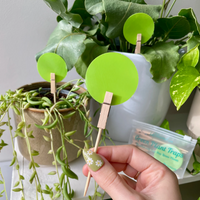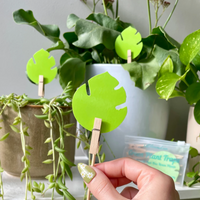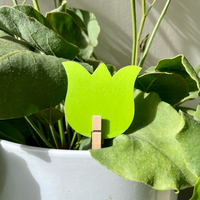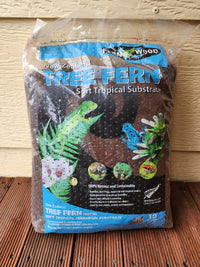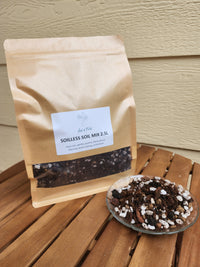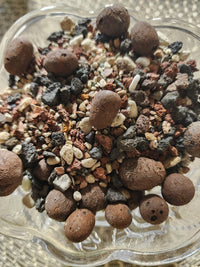Looking for a cleaner, less messy and an easier way to nurture your indoor jungle? Look no further than LECA! Short for Lightweight Expanded Clay Aggregate, LECA is a revolutionary growing medium made from baked clay pebbles that is recently gaining popularity. These little balls offer a unique alternative to traditional soil, particularly for those who struggle with overwatering or fungus gnats.
What Makes LECA Special?
LECA's magic lies in its properties:
- Airflow and Drainage: Unlike soil, LECA provides excellent air circulation around plant roots, preventing root rot caused by excessive moisture.
- Water Retention: The porous clay pebbles wick up water from the reservoir and hold onto it. Your plant will use up this water as it requires.
- Cleanliness: LECA is sterile and inert, reducing the risk of pests and diseases compared to soil. You can use your LECA balls indefinitely as long as you sterilise used LECA by boiling them for few minutes in water.
- Monitoring Made Easy: LECA's transparency allows you to easily monitor root health and water levels by using clear nursery pots.

Setting Up Your LECA Paradise
Transitioning your plants to LECA requires some preparation:
- LECA Prep: Rinse your LECA thoroughly to remove any dust. Soaking for 24 hours helps activate its water-holding capacity. To give your plants a boost, you can soak your LECA balls in a fertiliser solution such as GT Clonex Clone Solution.
- Potting Up: Choose a clear nursery pot with good drainage holes. Place the pot in another closed pot, such as a ceramic pot which will act as your reservoir pot. Preferably, the outer pot should not be clear, as the roots prefer to have a dark environment.
- Root Prep: For an established soil plant, gently remove your plant from its soil pot and rinse away the soil from the roots making sure no soil is left behind. You can also, pot your rooted cuttings straight into LECA.
- LECA Nest: Place LECA in the clear nursery pot, position your plant so the roots are in the pot and the main stem is above. Fill the remaining space with LECA. Gently tapping down your pot as you go to help the LECA settle into place.
- Watering: Fill the reservoir with a nutrient solution specifically formulated for hydroponics such as GT Clonex Clone Solution or GT Foliage Focus (preferably Clonex Clone Solution for newly potted plant). The water level should just reach the bottom of the LECA, not touching the plant's roots.

Pro Tip: Opt for a self-watering pot with a water reservoir indicator for effortless monitoring. Or you can even create your own self-watering pot by adding a water level indicater to your clear nursery pot.
LECA TLC: Keeping Your Plants Thriving
- Fertilising: LECA provides no nutrients, so regular feeding with a balanced hydroponic fertiliser is crucial.
- Flushing: Every few weeks, flush the system with plain water to remove any salt buildup.
- Algae Control: Algae growth can occur in clear pots. Reduce light exposure by using an opaque outer pot to minimise this and to develop healthier stronger roots.

With a little practice, LECA can transform your houseplant care routine. It' clean, low-maintenance approach and ability to promote healthy root growth make it a fantastic option for busy plant parents or those looking to prevent overwatering woes. This semi-hydro set-up is also a great option for plant parents that travel frequently, as most of the time your reservoir will last a week or two depending on the size of the plant and the overall environment at the time. So why not give LECA a try and watch your indoor oasis flourish?
For all your gardening needs, explore our one-stop shop – your ultimate destination for quality soil, top-notch pruning tools, and a plethora of expert resources.


